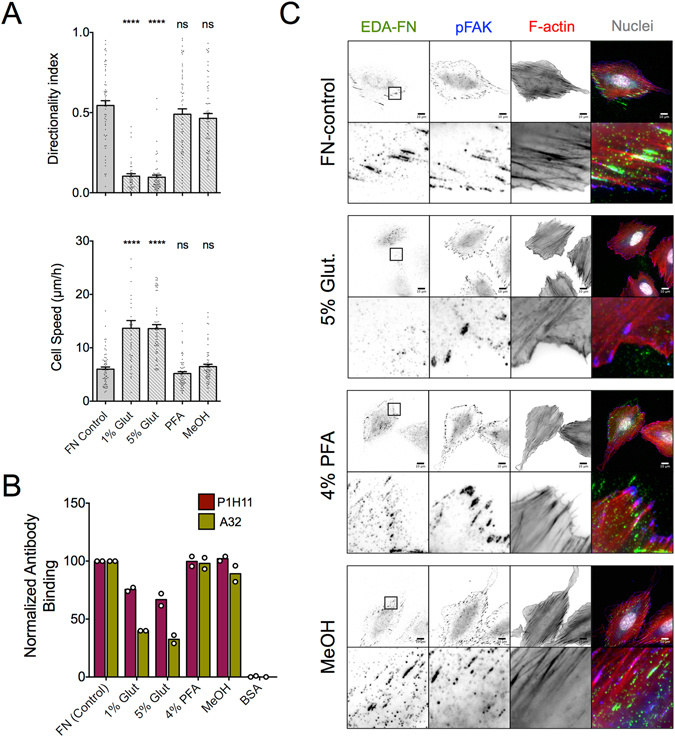Figure 6.

REF motility dependence upon FN treatment with different fixation agents correlates with induced changes in ligand accessibility. (A) REF speed and directionality index on FN-coated substrates (10 μg/ml) treated with different fixation agents. Cell speed and directional persistence were affected by glutaraldehyde (Glut), but not PFA or MeOH treatment of FN prior to cell seeding. Values from treated samples were compared to the control condition using one-way ANOVA analysis (Nexp = 2; n = 40 cells for 1% Glut, Nexp = 3, n = 60 cells for other samples). Mean ± s.e.m. are presented. ns: not significant, ****P < 0.0001. (B) Quantification of antibody binding to FN-coated (control) or FN-treated substrates using a modified ELISA assay. Reduced binding of monoclonal anti-FN antibodies against the CBD (clone P1H11) and the Hep2 domain (clone A32) was observed only for glutaraldehyde-treated samples. Each point represents an independent experiment (n = 5 samples/independent experiment). (C) Epifluorescence microscopy images of REF seeded for 6 hours on FN-coated substrates, fixed and stained against indicated proteins. REF were able to form polarized protrusions and assemble cellular FN (EDA-FN) on control, PFA-treated and MeOH-treated substrates, but not glutaraldehyde-treated ones.
